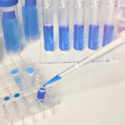Invest Puerto Rico (InvestPR), the Department of Economic Development and Commerce (DDEC), Puerto Rico Manufacturers Association (PRMA), the Pharmaceutical Industry Association (PIA), the Mechanical Contractors Association (MCA), among other government and industry organizations, hosted White House Special Representative to Puerto Rico Rear Admiral Peter J. Brown, and other representatives of the federal government, on a tour of Puerto Rico manufacturing plants last week.
Puerto Rico is in a strong position to increase manufacturing, and recent legislation is intended to increase investment in factories on the Island. The tour showed off Puerto Rico’s capability.
Medical and bioscience
The Food and Drug Administration has expressed concern over a period of years over the dependence of the US medical supply chain on China. Some legislation has been implemented to encourage American manufacturing of medical supplies and medications. Resident Commissioner Jenniffer Gonzalez Colon and Senator Mark Rubio have filed a bill (the MMEDS Act) specifically favoring Puerto Rico.
Advantages for Puerto Rico in the current manufacturing climate:
- Puerto Rico already has 49 FDA-compliant facilities for manufacturing pharmaceuticals and medical devices. Puerto Rico already exports more pharmaceuticals than any state, including most of the bestselling medications.
- Because of the territory’s deep experience with pharmaceuticals, workers and facilities are already prepared for compliance with the stringent rules required for bioscience and medical manufacturing.
- Puerto Rico has an educated, bilingual workforce in need of jobs. While manufacturers in the states struggle to fill manufacturing positions, Puerto Rico will be able to provide the needed workers.
Textiles
LS Quilting was one of the companies visited. They make bedding and curtains, but during the pandemic they have produced masks and gowns. Resourcefulness and flexibility are other strengths for Puerto Rico’s manufacturing sector, and LS Quilting, employing 45 workers, has provided an example.
Textiles and needlework used to be an important part of Puerto Rico’s manufacturing portfolio, though the job paid little in the early part of the 20th century, and working conditions were poor. Still, the industry grew tenfold between 1921 and 1937, and in 1934 was the second largest industry on the Island. Contemporary documents mention even then that Puerto Rican textile companies were flexible, and able to produce many different kinds of products.
With 80 textile factories on the Island, Puerto Rico is already #2 in Defense Department contracts for clothing and footwear. Companies in Puerto Rico are working to develop and product “intelligent textiles” using nanotechnology to bring high-tech features to military clothing.
Next steps
Puerto Rico is working hard toward financial recovery. Statehood will lead to better infrastructure, greater political stability, and greater confidence among investors. Tell your legislators that you want to see statehood for Puerto Rico.








No responses yet